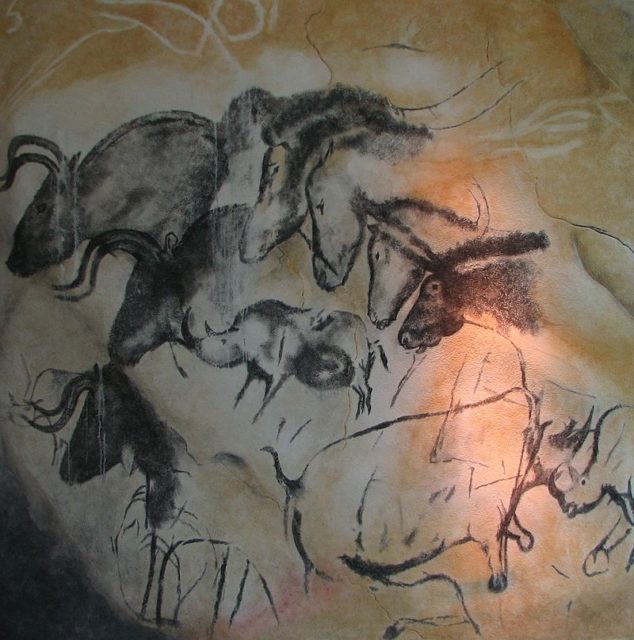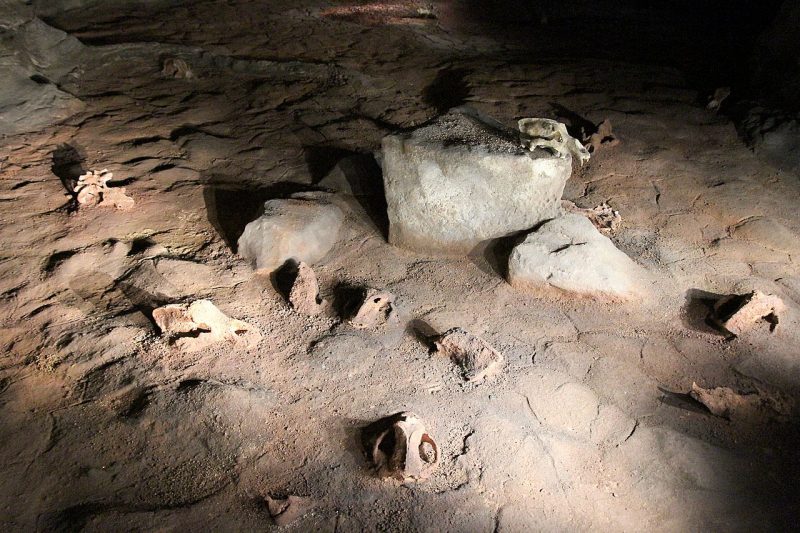Western Europe is becoming an exciting place for anthropologists and archaeologists alike as they explore previously dug sites in more detail and take the time to excavate the caves more carefully.
It had almost been forgotten that before World War I a rich collection of Aurignacian wall paintings, bas-reliefs, and engravings had been found in the Vézère Valley in South West France. New excavations were started in 2011, and the scientists reanalyzed the key site of Abri Blanchard. The reason for doing this was that many of the finds from before World War I had been lost or dispersed to various places. The archaeological methods of pioneers in the field back then are considered crude compared to today’s work.
38,000-Year-Old Cave Art Found On Limestone Slab In French Cave Sheds Light On Early Human Life https://t.co/PJBdpyTkmd – still used today! pic.twitter.com/tUwwQN1UpH
— Alan Gayle (@TransEuroStone) January 31, 2017
In the collapsed rock shelter, they discovered a limestone slab which was engraved with an artist’s complex rendering of aurochs and dots. Modern methods were used to recover the find, and dating the artifact by using Hydroxyproline 14C and molecular filtration puts it at the Aurignacian period in South West France. They also found that this artwork wasn’t part of the structure but a standalone piece that could have been used purely as decoration.
The artwork found in the Abri Blanchard site is similar to the discoveries at Chauvet-Pont d’Arc in Western France. This is one of the best-dated sites in the world and contains many images of animals. There are about 435 animal images on the walls in these caves, with mammoths, rhinoceros, bears, horses, aurochs, ibex, and owls recognizable in the paintings. The images were created using charcoal and red paint, and some are etched into the stone. Some of the images are created using stump-drawing for the internal area of the animals, and the artists also outlined the images to help make them stand out more.

In the caves, statuettes of bears, lions, and mammoths have also been found. Bone and ivory flutes and artifacts such as beads were made from antlers; bone and ivory have been recovered from this site and other sites in France. They also used shells and the teeth from carnivores in their personal ornamentation.
The Aurignacian culture derives from a group of humans that appeared first in Bulgaria about 43,000 years ago. They moved across Europe from there, eventually reaching the Portuguese Atlantic coast 38,000 years ago. This race of people is characterized by the style of stone tools that they used. It is thought they co-existed with the Neanderthals. The time they lived in was very cold, and these people were hunters; it is thought that they hunted the large herds of herbivores that were spread across the steppes.
It is known by scientists that these people lived in open-air camps as well as in shelters and caves. The hearth was the central point in their homes; wherever these sites have known to have been, stone and bone fragments have been found, as well as pigments they would have used in their artworks. In the north of Europe, remains of buildings have been found that were constructed of mammoth bones, International Business Times reported.
Their main hunting equipment was spears – the spear tips were made of organic material and were split or oval shaped so they could be firmly attached to a shaft. They also made flint projectile weapons like arrowheads and bladelets. They used stone flakes to make the tools they used in everyday life, such as scrapers that could have been used when preparing furs for tanning. They were thought to be a nomadic people, and they moved with the herds of herbivores. At their various settlements shell ornaments have been found. They appeared to be a very successful group of early humans.
